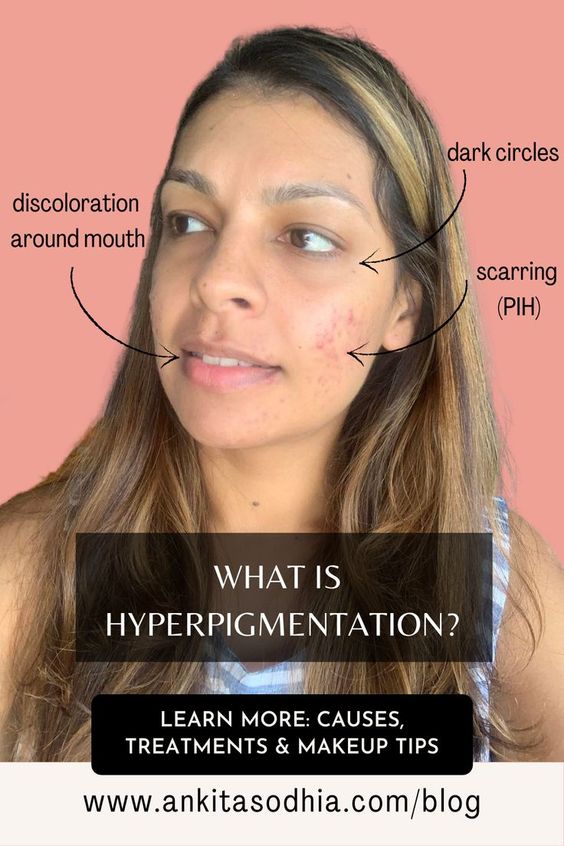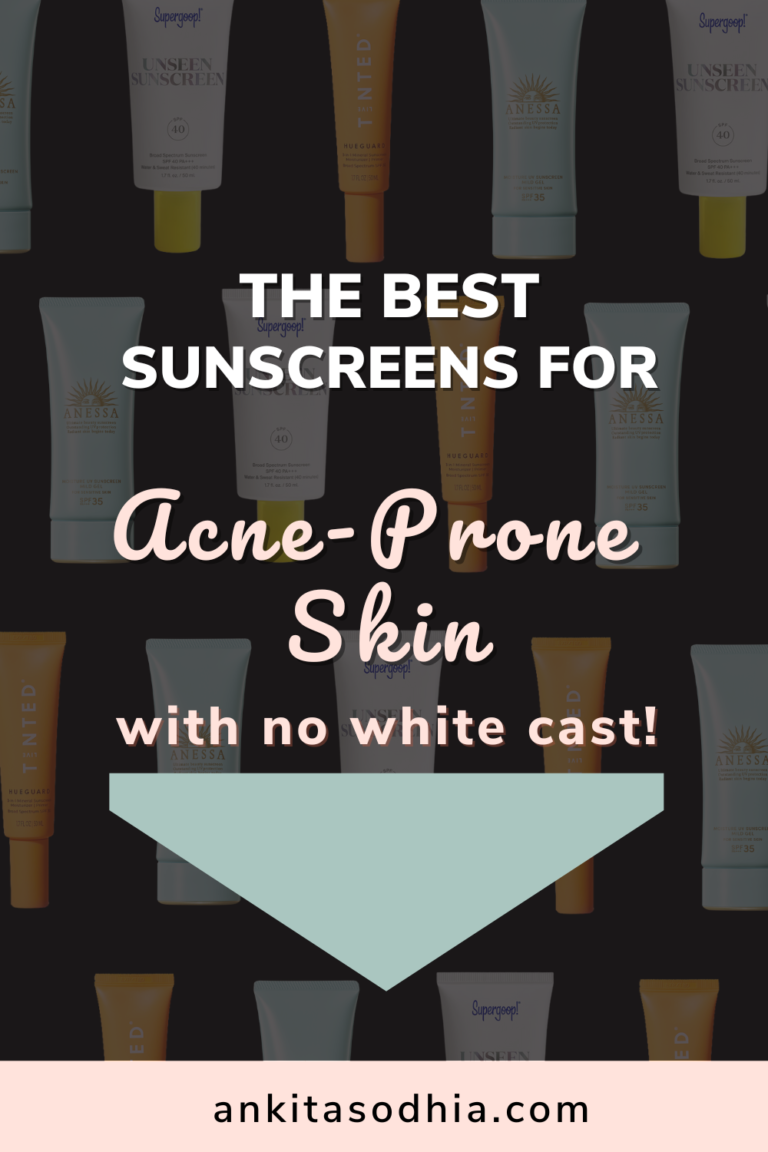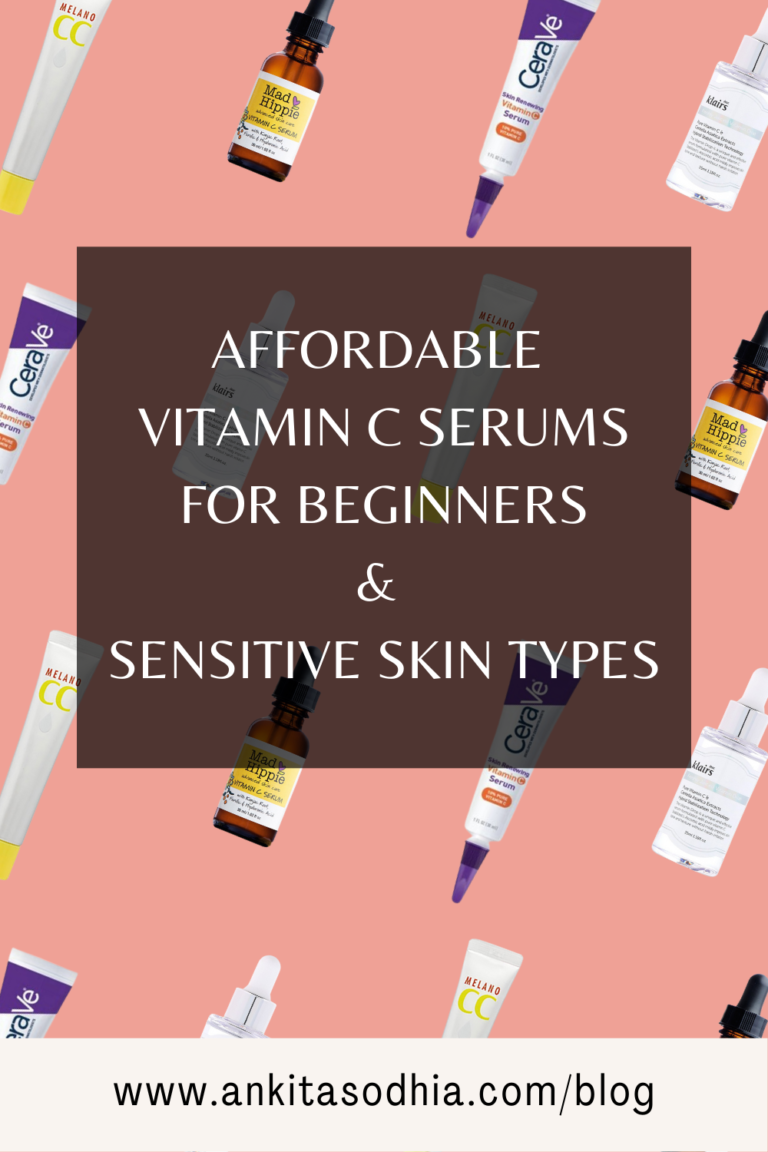Hyperpigmentation: Everything You Need To Know About
Table of Contents
What is hyperpigmentation?
To put it simply, hyperpigmentation is when patches or areas of skin appear darker (more brown) when compared to the normal skin tone. It happens due to the overproduction of melanin — a natural dark brown pigment in hair and skin — that deposits in different areas of the body.
Hyperpigmentation is more common in people with medium to darker skin tones.
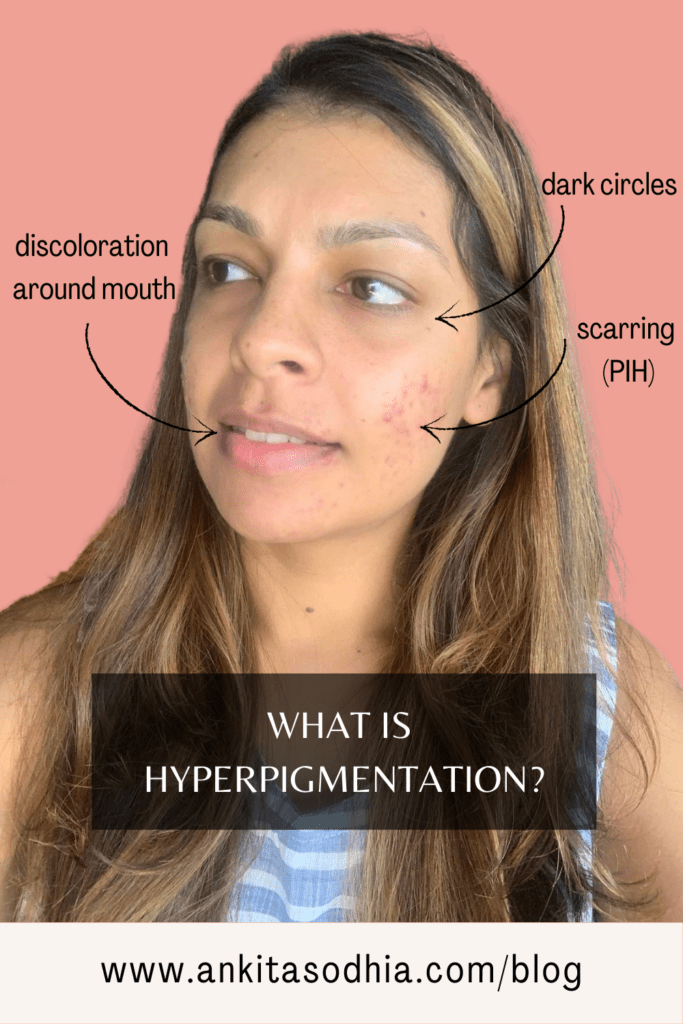
Types and causes of hyperpigmentation
Sun spots (aka age spots or liver spots) are dark brown spots, which can occur on the face and body. On the face, they tend to appear mostly around the eye, upper cheek area, forehead and temples. This happens due to increased sun exposure (it increases the production of melanin in the skin) over time, which is why wearing sunscreen every day to prevent hyperpigmentation is so important.
Melasma is seen as larger dark brown patches on the face and body. On the face it occurs on the forehead, cheeks, and around the mouth. It is more common in women than men. Sun exposure and hormonal changes are the main causes. It’s very common for pregnant women to get melasma due to the hormonal changes during pregnancy, causing excess production of melanin in the skin.
Post-inflammatory hyperpigmentation (PIH) is usually seen as dark scars or patches due to the skin undergoing some kind of trauma such as acne or treatments such as laser and skin peels. The important thing to note: PIH is temporary and usually not long-lasting like melasma and sun spots.
Treatments
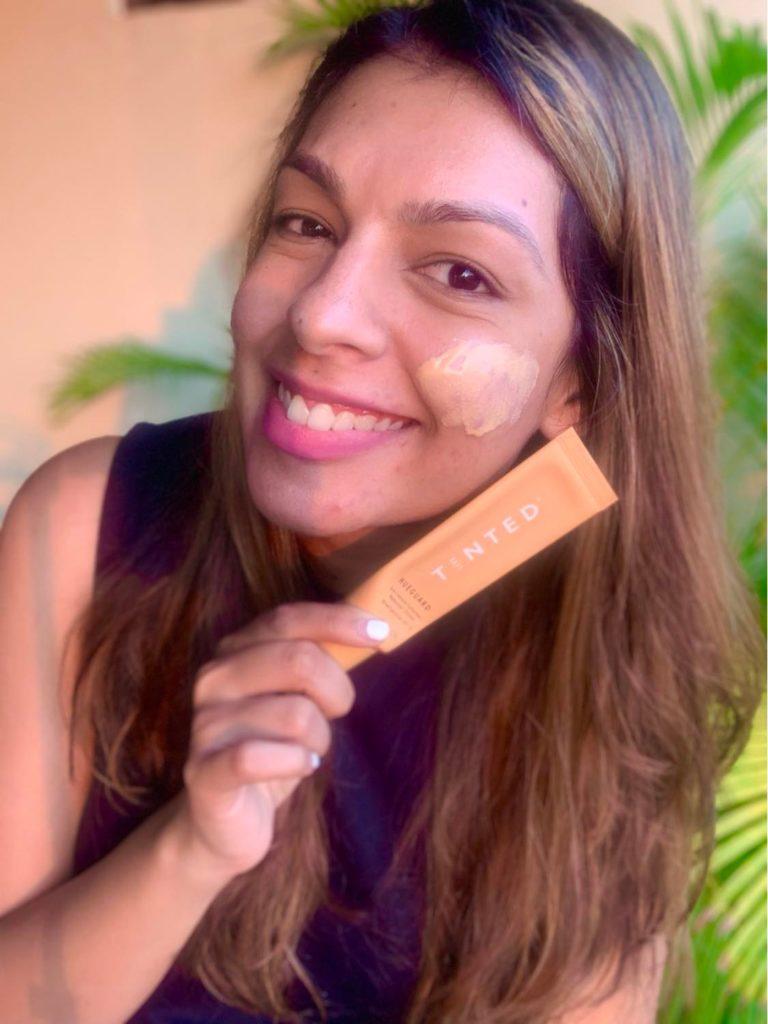
Before jumping into treatment — let’s talk about how to prevent hyperpigmentation: studies wearing sunscreen every day helps to prevent the appearance of dark spots and other hyperpigmentation. Sunscreen acts like a shield against UV radiation, which is a trigger for the overproduction of melanin in the skin leading to hyperpigmentation. Apply a tinted sunscreen with SPF 30 or higher every day (and re-apply every two hours) to prevent dark spots from appearing or getting worse, if you already have some.
Try daily skincare cleansers, serums and creams with ingredients that target hyperpigmentation such as Vitamin C, kojic acid, glycolic acid, tranexamic acid, azelaic acid, and retinoids to fade hyperpigmentation.
Alternatively, there are more targeted and powerful treatments such as chemical peels, laser treatments, and prescription medication, which should be done with the guidance of a dermatologist.
Related:I Found The Perfect Mineral Face Sunscreen For Medium To Dark Skin — And It Has No White Cast!
Related: Why You Need A Vitamin C Serum In Your Morning Skincare Routine — And Beginner Tips To Get Started
What is the difference between hyperpigmentation and hypopigmentation?
Hypopigmentation is the absence or underproduction of melanin in the skin, so it is often seen as light spots around the body or as a lack of pigment (color) in hair, eyes, and skin. The causes of hypopigmentation largely differ from hyperpigmentation; hypopigmentation is usually caused by conditions such as albinism and vitiligo. Hyperpigmentation is the overproduction of melanin — presenting as dark spots and patches on the skin.
How to correct hyperpigmentation with makeup
There are a few ways to correct and cover up hyperpigmentation on the face depending on the intensity. For example, dark circles and hyperpigmentation around the mouth requires color correcting (canceling out the dark gray/blue tones) with orange / peach correctors before applying concealer or foundation for an even skin tone. Smaller spots and scars can easily be covered up with a concealer, which is the same color as the normal skin tone.
Related: Beginner’s Makeup Guide: What Is Color Correcting?
Understanding These Two Basic Facts About The Color Wheel Will Seriously Improve Your Makeup Game

